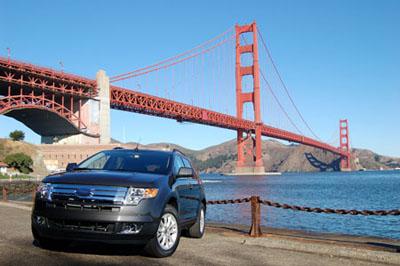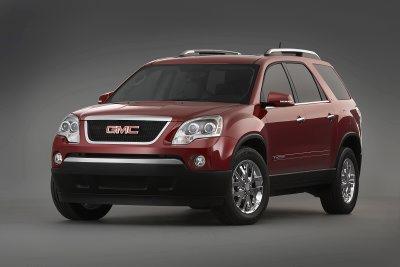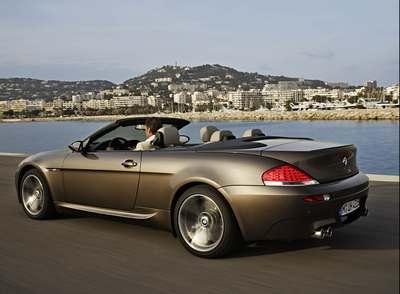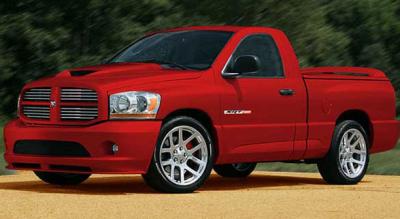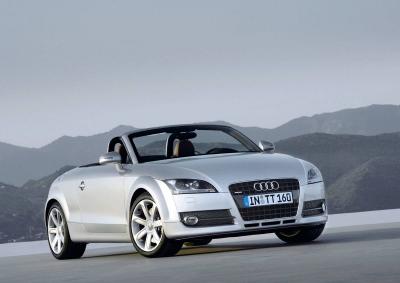
The most powerful version of BMW’s new generation of magnesium aluminium
VALVETRONIC six-cylinder petrol engines, boasting an impressive 200 kW, will lead a refreshed and re-invigorated performance-oriented X3 range, with improved ergonomics, extensively revised cabin and dashboard functions.
Offering the free-revving performance and smoothness as well as the exceptionally low weight and exemplary efficiency so typical of BMW, the new top-of-the-range 3.0si straightsix, one of the most advanced engines of its type in the world, will endow the new X3 with sports car performance and
a power output higher than any other 3.0-litre in the BMW family.
Even so, fuel consumption for the new petrol straight-six has improved by an impressive 15 per cent while the 3.0d model continues to boast a combined fuel consumption figure of 8.6 litres per 100 km.
The updated BMW X3 builds on the success of its predecessor which has proved itself to be a real high flier around the world, becoming one of the most popular all-wheel-drive vehicles in its segment in many countries.
More than 260,000 X3 Sports Activity Vehicle have been sold worldwide in two and a half years and this impressive success story has enabled BMW to sell more all-wheel-drive cars worldwide last year than any other manufacturer in the premium segment.
The new BMW X3 will be unveiled next week at the Australian International Motor Show, with the first customer deliveries arriving this summer. BMW has today announced pricing for the revised X3 range.
Visually, the BMW X3 maintains its rugged off-road looks and purposeful on-road stance that has established the premium SAV as a leader in its class, combined with even more efficient drive systems. The BMW X3 features new headlight and rear lights as well as reprofiled colour-coded bumpers with deep-set fog lights.
The cabin has been extensively upgraded with a redesigned instrument panel, new steering wheel, centre console, seats, revised trim levels and a new roof lining, as well as improved storage compartments. In addition, all models will be equipped with Bluetooth mobile phone preparation.
The BMW X3 has been given a subtle, yet comprehensive styling makeover at the front and rear. Front and rear bumpers are split into two levels, finished in body colour, with the more intentionally exposed protective elements made of robust black plastic.
Four new exterior colours are included in the updated specification including Crimson Red, Platinum Bronze, Monaco Blue and Montego Blue. In addition, a fifth interior colour scheme has been added to the already impressive standard interior leather and trims combinations. Customers can team their choice of leather upholstery with interior trims in either brushed aluminium, fine wood in poplar grain grey, ash grain or poplar grain light.
A striking feature of the X models is the so-called “six-eyed look” that lends a purposeful air to the front of the car, featuring new double circular headlights with redesigned reflectors behind clear glass.
Significantly, the BMW kidney grille has been increased in size and is now a very distinctive visual feature of the front of the car. At the rear the new light assemblies are covered with clear glass over horizontal rods of light fed by LEDs to ensure a striking night design, but also serve as an eye-catching feature of the new BMW X3 in daylight.
The rear profile of the BMW X3 boasts dominant horizontal lines that continue from the tailgate right down to the bumper, underscoring the car’s powerful appearance. From the side, a striking lower design line emphasises a discreet wedge-shape and ties in with both the front and rear aprons.
Importantly too, the BMW X3 cabin has been upgraded with high-quality materials. The instrument panel has a new décor strip that matches in colour and material with the decorative surfaces of the centre console. Galvanised metals on the door handles and switchgear of the air temperature control system, exclusive leather and textile variants, a high-quality colour scheme and new designs for the roof lining as well as plastic surfaces with a high-class texture clearly reflect the character of the robust, yet elegant interior.
BMW designers have also addressed the need for additional storage areas, with more spacious storage in the door trims. There is also a new three-spoke steering wheel design.
The X3 will be available with a new generation of in-line six-cylinder petrol engines of 2.5-litre and 3.0-litre capacity.
The new BMW X3 3.0si incorporates the most powerful version of the 3.0-litre six-cylinder engine so far, with a reputation for smooth running, reliability and performance.
Significantly, both the new BMW X3 2.5si and the 3.0si boast more power and torque than the previous BMW X3 2.5i and 3.0i six-cylinder engines, with gains also made in the area of fuel economy.
The BMW X3 3.0si gains a substantial 30 kW more power and 15 Nm more torque over the 3.0i, while the 2.5si gains 19 kW and 5 Nm over the 2.5i.
The BMW X3 3.0si accelerates from zero to 100 km/h in only 7.5 seconds and reaches a top speed of 210 km/h. With average fuel consumption in the EU cycle of 10.3 litres per 100 km, it offers exemplary economy for this class.
The corresponding performance of the BMW X3 2.5si is just as impressive. It reaches the 100 km/h in 8.5 seconds and has a top speed of 210 km/h. The average fuel consumption is 9.9 litres per 100 km (EU cycle).
Both the 2.5si six-cylinder and 3.0si six-cylinder are equipped with a magnesium-aluminium composite crankcase, the variable valve-control VALVETRONIC and a coolant pump with demand-based control. As they weigh just 165 kg, they also contribute to the well-balanced axle-load distribution and outstanding driving dynamics.
Apart from the new petrol six-cylinder engines, the BMW X3 is also available with a lightweight in-line 3.0-litre six-cylinder turbo-diesel. The BMW X3 3.0d boasts the latest generation Variable Turbine Geometry (VTG) turbocharger, all-aluminium crankcase, common-rail injection with piezo injectors and oxidation catalytic converter.
BMW X3 2.5si: Manual (Auto – opt)
• 2.5-litre six-cylinder.
• 160 kW at 6,500 rpm and 250 Nm from 2,750.
• Acceleration (0-100km/h) 8.5 seconds.
• Top speed 210 km/h.
• Average fuel consumption (EU cycle) 9.9 litres per 100 km.
BMW X3 3.0si: Automatic
• 3.0-litre six-cylinder.
• 200 kW at 6,600 rpm and 315 Nm at 2,750 rpm.
• Acceleration (0-100 km/h) 7.5 seconds.
• Top speed 210 km/h.
• Average fuel consumption (EU cycle) 10.3 litres per 100 km.
BMW X3 3.0d: Automatic
• 3.0-litre six-cylinder.
• 160 kW at 4,000 rpm and 480 Nm from 1,750 rpm.
• Acceleration (0-100km/h) 7.9 seconds.
• Top speed 210 km/h.
• Average fuel consumption (EU cycle) 8.6 litres per 100 km.
The X3 3.0si and 3.0d will feature the new six-speed Steptronic automatic transmission (available as an option for the 2.5si). The new transmission offers improved shift dynamics while the expected BMW passive and active safety systems are at the ready.
The BMW X3 offers Automatic Stability Control and Traction (ASC-X), Dynamic Stability Control (DSC), Anti-Lock Brakes (ABS), Dynamic Brake Control (DBC), Automatic Slip Control (ASC), Cornering Brake Control (CBC), increased braking readiness, fade compensation, dry brake function and Hill Descent Control (HDC).
One of the newest developments in the BMW X3 is a new parallel networking of the permanent, intelligent xDrive all-wheel-drive system with DSC and engine control through Integrated Chassis Management (ICM).
The superb BMW intelligent permanent xDrive all-wheel-drive system, with variable and proactive torque distribution between the front and rear axles, carries over into the new BMW X3 range. In normal driving situations the torque is distributed 40:60 but can also be varied automatically between 50:50 and 0:100 for the best possible driving stability, dynamics and traction.
In special situations, up to 100 per cent of the engine torque can be directed briefly to the front axle. A differential locking function is activated with xDrive by selective application of the brakes on the wheel that’s spinning.
To help avoid rear-end collisions, the new BMW X3 is also equipped with an LED brake force display. In the case of particularly heavy braking and if the ABS is activated, the lightemitting surface of the brake lights at the rear of the BMW X3 increases.
As well as front and side airbags, the interior also has side curtain head-level airbags as part of the standard equipment. The BMW X3 is equipped with three-point automatic Seat belts on all five seats. The restraint systems have Seat belt force limiters and the front seats have seatbelt pre-tensioners as well.
Overall dimensions remain largely unchanged. The new BMW X3 is 4,569 mm long, 1,853 mm wide and 1,674 mm high. As the more compact member of the SAV model family from BMW, the BMW X3 provides superb agility and ease of handling while its cabin is spacious and flexible. The luggage compartment cover conceals a load area of 480 litres.
The large tailgate that swings up high and has a low load edge also make it easier to accommodate cumbersome goods. When the asymmetrically split rear bench Seat has been folded back, the rear section boasts a maximum storage volume of 1,560 litres.
Intelligent permanent all-wheel drive: BMW xDrive.
The BMW X3 range comes with the permanent intelligent xDrive all-wheel system that provides completely variable power distribution between the front and rear axle with remarkably fast and precise reactions. It always directs the driving power of the engine to where it can be most effectively used via a transfer box with electronically controlled multiplate clutch.
Not only does this lead to maximum traction on slippery surfaces, it is also good for the driving dynamics because it promptly counteracts any tendency to oversteer or understeer when cornering.
A differential locking function is realised via the braking action on the respective spinning wheel, providing superior and safe handling characteristics.
In normal driving situations, the drive torque is distributed in the ratio of 40:60 between the front and the rear wheels. xDrive can also vary torque between front and rear axles depending on the driving conditions and can distributed drive torque briefly to one axle in extreme conditions.
The BMW X3 can also react quickly to any tendency to oversteer during high-speed cornering. The multi-plate clutch is more strongly closed to direct additional power to the front wheels and to optimise the driving stability. In this way, up to 75 per cent of the torque can be transmitted to the front axle during extreme oversteering vehicle response.
Further developed: Integrated Chassis Management.
To guarantee these high-speed precise reactions, the xDrive all-wheel
system, the Dynamic Stability Control (DSC) and the engine control system are networked with one another via the Integrated Chassis Management (ICM).
The sensors of the suspension control also supply the control unit of the xDrive
with the data required to determine the current driving situation. This enables xDrive to pro-actively stabilised the vehicle to a certain extent.
Slip is detected and prevented, even before the affected wheels start to spin and become noticeable for the driver or any greater instability occurs. If there is a change in the power distribution brought about by the xDrive that is no longer sufficient to optimise the driving stability, then DSC intervenes with braking actions on individual wheels and by influencing the engine control system.
The new control structure of the Integrated Chassis Management ensures
an even faster and more precise co-ordination between the xDrive and DSC. Until now, engine and brake management influenced the self-steering characteristics of the vehicle almost independently of the longitudinal torque management, so the three regulating circuits now operate in parallel.
The exact networking with the DSC, the xDrive all-wheel system enables a rapid and precise reaction to changed driving situations and, therefore, even more driving dynamics.
The new DSC not only provides for driving stability and traction, it also optimises the overall performance of the braking system. It compensates for any drop in braking effort with a selective increase in braking pressure while also offering advanced application of the brake pads in readiness for spontaneous braking.
Regular dry braking optimises the efficiency in wet conditions and the Dynamic Braking Control (DBC) function automatically maximises the brake pressure when exceptional braking is required. In addition, a hill hold function eases moving away on inclines.
BMW X3: Popular around the world.
The BMW X3 has proved itself to be a real high flier around the world, becoming one of the most popular all-wheel vehicles in it segment in many countries.
More than 260,000 vehicles have been sold worldwide in two and a half years.
The improved engines and revised interior and equipment levels in the new BMW X3 offer optimum conditions for the continuation of this success story. With exception driving dynamics, a new design and modified interior, it will appeal to those enthusiasts seeking an exceptional driving experience in association with a robust, agile and extremely versatile vehicle.
The new BMW X3 offers multi-faceted driving pleasure of the highest calibre.
Pricing:
X3 2.5si Manual $65,900 (+ 19 kW, 5 Nm, $1,000 over 2.5i)
X3 2.5si Automatic $68,500 (+ 19k W, 5 Nm, $1,000 over 2.5i)
X3 3.0si Automatic $73,900 (+ 30 kW, 15 Nm, $1,500 over 3.0i)
X3 3.0d Automatic $75,900 (+ $500 over 3.0d)
 MINI motors to a different beat during October 2006 as the dynamic, young brand offers Sydneysiders a test-drive treat with an exciting difference.
MINI motors to a different beat during October 2006 as the dynamic, young brand offers Sydneysiders a test-drive treat with an exciting difference.
